About Alpacas
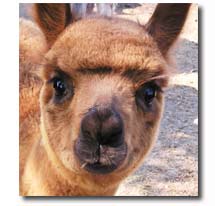 When
you first see alpacas, you are intrigued. These animals come from
high up in the Andes Mountains of South America. While they are
beautiful to look at and come in 27 different natural colors, you
would expect the harsh conditions to make them coarse and brittle.
Quite to the contrary! When you first touch alpaca fleece you are
amazed at how soft and lustrous it is. You want to run your hands
through it to get the full experience. The calm, gentle alpacas
hum softly while you enjoy touching their fleece. When
you first see alpacas, you are intrigued. These animals come from
high up in the Andes Mountains of South America. While they are
beautiful to look at and come in 27 different natural colors, you
would expect the harsh conditions to make them coarse and brittle.
Quite to the contrary! When you first touch alpaca fleece you are
amazed at how soft and lustrous it is. You want to run your hands
through it to get the full experience. The calm, gentle alpacas
hum softly while you enjoy touching their fleece.
While that harsh environment of the Andes is their natural environment,
alpacas have proven to be a great livestock investment for farms
in North America since 1984 when they were first imported. Today
there are approximately 100,000 alpacas in the United States. Alpacas
were last imported from South America in 1998. Soft as cashmere
and warmer, lighter and stronger than wool, alpaca fleece is enjoyed
by spinners and weavers for garments which can be worn next-to-the-skin.
There are two types of alpacas: suris and huacayas. The fleece
of the suri grows in the form of silky dreadlocks. There is nothing
quite like seeing a suri in full fleece run across a pasture with
all that lustrous fiber blowing in the wind. The fleece of the huacaya
(wa-ki-ya) alpacas gives them the appearance of woolly teddy bears.
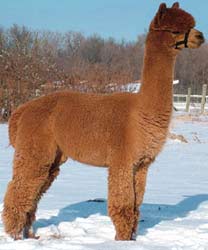
Huacaya Alpaca |
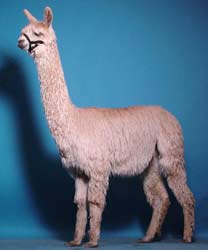
Suri Alpaca |
Alpacas are clean animals that require minimal care. They eat grass
and grass hay and a small portion of supplement each day. They like
plenty of fresh water and want to spend time outside romping around
the pasture. Alpacas are very social animals that need the company
of other alpacas to fulfill them.
Request
more information!
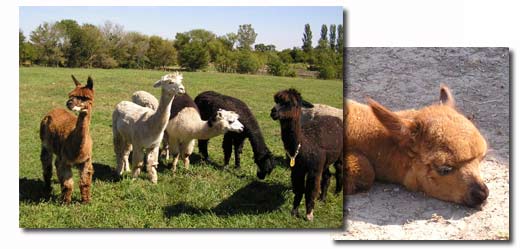
|



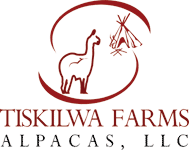

 When
you first see alpacas, you are intrigued. These animals come from
high up in the Andes Mountains of South America. While they are
beautiful to look at and come in 27 different natural colors, you
would expect the harsh conditions to make them coarse and brittle.
Quite to the contrary! When you first touch alpaca fleece you are
amazed at how soft and lustrous it is. You want to run your hands
through it to get the full experience. The calm, gentle alpacas
hum softly while you enjoy touching their fleece.
When
you first see alpacas, you are intrigued. These animals come from
high up in the Andes Mountains of South America. While they are
beautiful to look at and come in 27 different natural colors, you
would expect the harsh conditions to make them coarse and brittle.
Quite to the contrary! When you first touch alpaca fleece you are
amazed at how soft and lustrous it is. You want to run your hands
through it to get the full experience. The calm, gentle alpacas
hum softly while you enjoy touching their fleece.